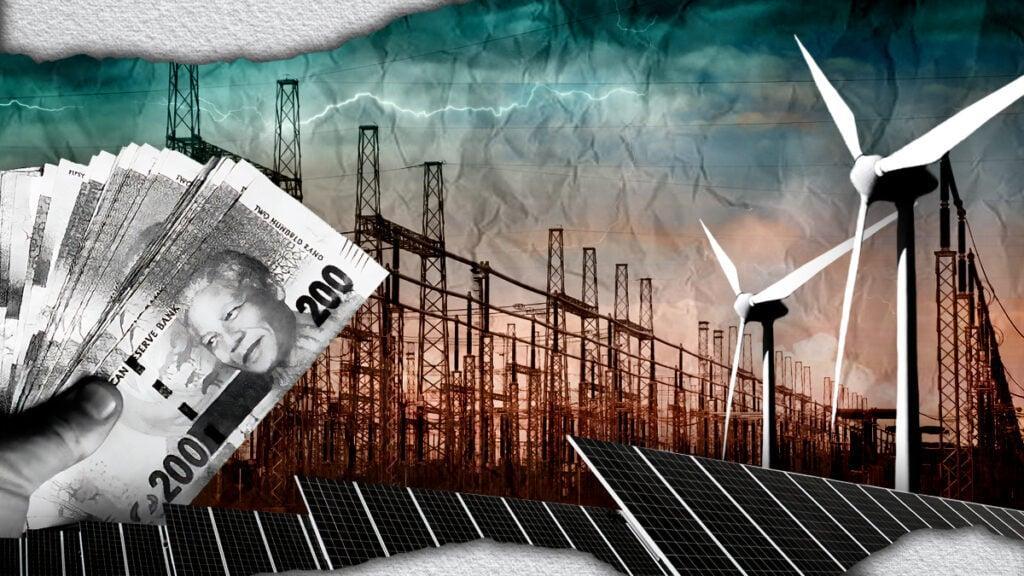Africa-Press – South-Africa. South Africa is quickly running out of capacity to add new electricity generation projects to the national grid, hindering the country’s efforts to bring load-shedding to an end for good.
This is despite the country’s desperate need for additional generation capacity as Eskom continues to underperform and it begins to decommission coal-fired power plants in the coming decade.
While South Africa’s electricity situation has greatly improved since March 2024, the national grid remains fragile.
Eskom has consistently failed to meet its Energy Availability Factor (EAF) targets over the past three years, ensuring the country has little buffer between it and load-shedding.
In 2023, Eskom had an average EAF of 53% compared to its target of 60%, while in 2024, it undershot its target of 65% by nearly 10%.
Solar energy company Gosolr reported in its latest Light Paper report that so far in 2025, Eskom has an average EAF of 57.3% compared to its target of 70%.
While this does indicate improved utility performance and has reduced load-shedding significantly, it remains insufficient to declare an end to load-shedding.
Furthermore, the marginal excess of electricity in South Africa is inadequate to facilitate faster economic growth, as increased activity will push demand for energy higher and tip the country into load-shedding, limiting growth.
Eskom is also suffering from an ageing coal fleet that is nearing the end of its design life. The average power station is 41 years old, compared to a planned operating life of 60 years.
Some of these plants’ operations can be extended at great cost and with increased maintenance, buying the country crucial time to build out new capacity to replace them.
However, GoSolr said this buildout has been limited by various factors, such as inconsistent regulation, inadequate incentives, and a lack of grid capacity.
The lack of grid capacity is highly concerning, as it would take years to increase capacity in key areas of the country to boost investment in new generation projects that can connect to the grid.
GoSolr revealed that South Africa has already effectively run out of additional grid capacity in three provinces – the Northern, Eastern, and Western Cape – which are ideal for wind and solar generation.
Other parts of the country, such as the Free State, North-West Province, Limpopo, and Mpumalanga, have limited additional capacity.
This effectively limits investment in new projects and hinders the country’s efforts to bring load-shedding to a permanent end.
The map below, courtesy of Gosolr, shows the limited spare capacity across most of South Africa.
What is needed to ‘flip’ the grid
To rectify this situation, South Africa effectively needs to ‘flip’ the electricity grid by building around 14,000 km of transmission lines and upgrading substations across the country’s Cape provinces.
South Africa’s grid was designed primarily to transfer electricity from the large, coal-fired power stations in the country’s northeast to other parts.
Renewable energy, on the other hand, is decentralised, and generation facilities have predominantly been built in the country’s Cape provinces.
Effectively, the country’s grid will have to be ‘flipped’ around, with the majority of generation capacity coming from the country’s southwest to the major load centre in Gauteng.
Eskom chairperson, Mteto Nyati, estimates that the country would need around R390 billion over the next ten years to build sufficient transmission infrastructure.
“While this will not be a cheap exercise, there is no way around this. We have to spend the money and develop the transmission grid infrastructure,” he said.
Some point to the rapid rise of renewables as the reason for the grid capacity problem, with the rapid construction of wind and solar farms swallowing up capacity before more could be built.
However, longer-term problems have been the government’s intense focus on generation over transmission since the early 2000s, as well as a lack of skills.
Energy analyst and managing director of EE Business Intelligence, Chris Yelland, said Eskom’s grid is not dilapidated but that it had been neglected over the past decade and a half.
Yelland explained that the transmission grid is generally in good condition and performs well, but is under increasing pressure as new renewable capacity comes online.
Access to Eskom’s grid is severely limited, with the utility needing to build new substations, upgrade existing infrastructure, and build thousands of kilometres of new transmission lines.
For More News And Analysis About South-Africa Follow Africa-Press






